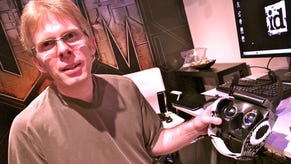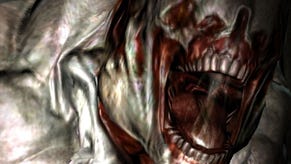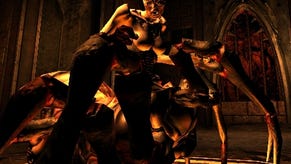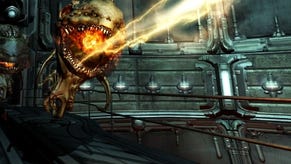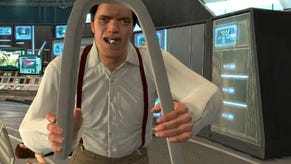Face-Off: Doom 3: BFG Edition
Digital Foundry assesses id Software's in-house remastering.
| - | Xbox 360 | PlayStation 3 |
|---|---|---|
| Disc Size | 7.0GB | 6.8GB |
| Install | 7.0GB (optional) | - |
| Surround Support | Dolby Digital | Dolby Digital, DTS, 5.1LPCM |
Doom 3: BFG Edition is best described as the net result of John Carmack and id Software taking on an HD remastering project, because this new release is effectively a 720p console revamp of a 2004 PC game originally designed with a 640x480 resolution in mind. While some might argue that the PC version is somewhat superfluous when stacked up against eight years' worth of community-driven mods, on console the BFG Edition makes a lot more sense and in the hands of Carmack and company, the result is a game that's a cut above the typical HD remaster.
For a start, some thought has been given to the way in which Doom 3 will be played on console. An aesthetic originally designed around a desktop environment with the screen directly in front of the player has been tuned to better suit a living room environment. The lighting has been revamped, making the BFG Edition brighter and easier to track with the display at range, field of view has been tweaked with 16:9 screens in mind, while certain elements of the artwork have been embellished to reduce some of the more glaring, lower-quality texture work.
In the PC version, the changes are a mixed bag, but on console, the choices seem fitting. Thankfully the craze for simple PC ports masquerading as "HD remasters" appears to be over, but it's gratifying that in bringing Doom 3 to console, id has put the work in here. In Carmack's own words, the firm knew that farming out the game to a sub-contractor would result in sub-optimal results, so it carried out the conversion itself and the results are generally impressive - especially when it comes to frame-rate, where Doom 3: BFG Edition targets a 60 frames per second update.
We'll roll out the cross-platform comparison vids, but perhaps the most telling - and relevant - head-to-head is the 2004 original vs. BFG Edition PC video we ran yesterday, illustrating the work id carried out in turning a specific kind of computer experience into a big, brash, console blaster.
There are few surprises on the console front. By and large, both Xbox 360 and PlayStation 3 operate at native 720p, with no anti-aliasing applied. There's a large degree of contrast between many of the visual components, leading to obvious edges and plenty of jaggies. On top of that, anisotropic filtering does appear to be engaged, but at a relatively low level so there's obvious shimmering on ground textures. However, all of these compromises are in place to serve the frame-rate target, and to that end, the drawbacks are worthwhile, because the 60Hz experience transforms the game. At its best, particularly in the highly enjoyable Lost Mission bonus campaign, Doom 3 still manages to provide an enjoyable slice of classic id gunplay and frame-rate is a crucial element in this - nothing can beat the low-latency response and the super-smooth, arcade-style refresh that's synonymous with 60FPS gameplay.
"id Software's take on HD remastering doesn't make a whole lot of sense on PC - this is designed with console in mind and from a tech perspective, it's an impressive achievement in many ways."
Alternative versions of this video are available:
- Doom 3: BFG Edition - Xbox 360 vs. PC
- Doom 3: BFG Edition - Xbox 360 vs. PS3
While the console versions provide an almost identical picture, there are some bonus goodies on the PC version to enjoy over and above support for higher resolutions. First up, anti-aliasing - up to 4x multi-sampling - can be employed to smooth off the edges which tidies up the image no end (although the original 2004 game supported up to 16x on our PC). Secondly, a new motion blur effect - sneaked in by John Carmack himself just before the game shipped - is one of the finest implementations we've seen. Both camera and object-based, cranking it up to the full 32x sampling produces some truly excellent results.
On console, id has had to make some compromises in order to achieve that 60Hz target. Indeed, they're the same cutbacks employed in Rage, which ran at the same frame-rate. To maintain that silky-smooth update, every single frame needs to be generated in under 16.67ms, but the reality is that there are so many variables in rendering any given scene that sometimes the engine inevitably runs over budget. When this happens, the framebuffer is flipped as the screen is refreshing, resulting in torn frames.
At this point, id's internal auto-balancing code kicks in at full effect. According to Carmack, Doom 3 is a game with multiple light passes that hammers the GPU far more than Rage ever did, but regardless, the same dynamic performance optimisations are carried out here - screen resolution lowers on the fly in order to reduce GPU load until rendering times slip back beneath the 16.67ms threshold. At that point, full 720p resolution is restored.
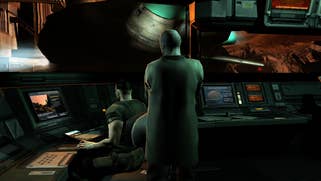
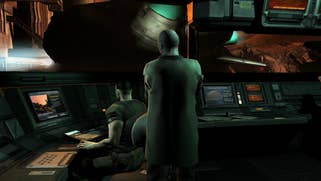
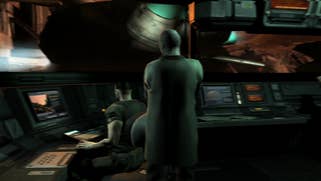
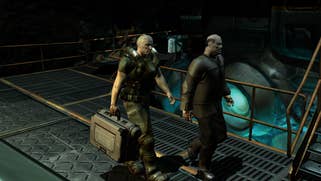
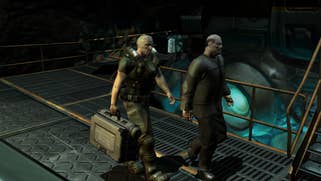
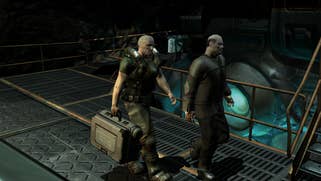

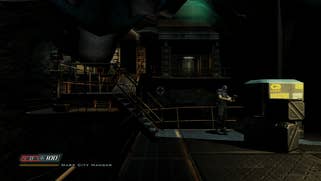

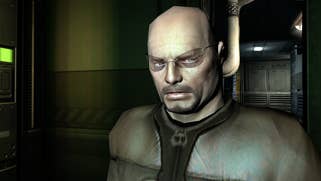
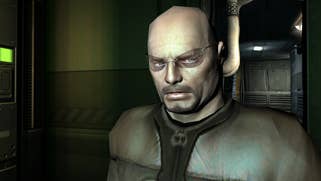
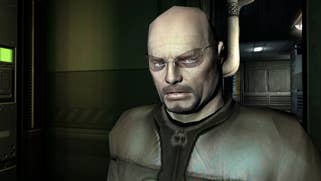


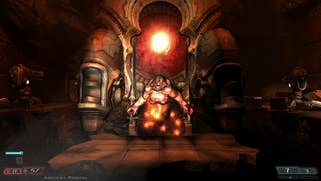
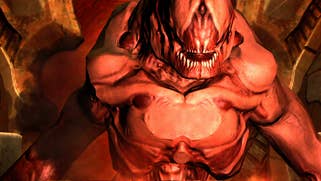
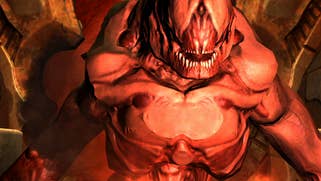
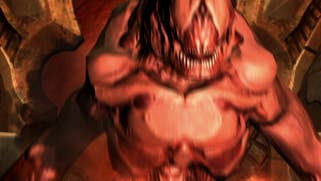
Similar to Rage, it's the Xbox 360 that commands the advantage here, an aspect hinted at by Carmack himself. Dynamic resolution scaling is employed less often and there are fewer torn frames, giving the 360 game a more polished appearance in many scenes. The question is to what extent the performance auto-balancer is successful: 60 frames per second gameplay is the premium in this game and dropping frames not only impacts the look of the game, but more importantly the feel of it too.
Doom 3: BFG Edition - performance analysis
Eight years on, you may think that running a 2004 vintage PC game at 60Hz on a PlayStation 3 or Xbox 360 would be a piece of cake, but Doom 3: BFG Edition demonstrates fairly well that it is indeed more challenging than you might think. It's worth remembering that the original game was something of a performance hog in its day - it could run reasonably enough on a GeForce 6600 GT, but you'd be hard-pressed to get 60FPS on a 6800 Ultra at a decent resolution, and as far as ultra level settings go (which required a gargantuan - for the time - 500MB of texture memory), you could forget it.
It's also worth bearing in mind that the core rendering hardware within the current-gen consoles is only a year or two more modern than the original game itself, suggesting that a simple PC port probably wouldn't be good enough - exactly as John Carmack suggests in his 2012 QuakeCon keynote. In fact, we can ascertain that for sure by looking at Quake 4 - an Xbox 360 launch game running on the same idTech 4 engine. It's safe to say that the general performance level is immensely variable at best, very disappointing at worst.
Clearly, Doom 3: BFG Edition is an enormous improvement. For the most part, both console versions do indeed run at the prescribed 60 frames per second, with all the bonuses in smooth gameplay and low-latency controller response that this tends to bring with it. However, while the performance auto-balancer tends to produce exactly the kind of results you'd want on Xbox 360, there are many isolated areas where the PS3 suffers in comparison, with screen-tear, judder and frame-rate drops manifesting more prominently. This wouldn't be a problem if it were limited just to the engine-driven cut-scenes, but unfortunately the most noticeable examples of this are during gameplay.
Xbox 360 isn't perfect but it acquits itself fairly well while PS3 clearly struggles in certain areas, the silky smooth feel of the combat compromised when the engine is under load. For those with stereo 3D displays, the importance of frame-rate to the feel of the gameplay is easily demonstrated - switch to the HDMI 1.4 modes supported on both Xbox 360 and PlayStation 3 and frame-rate is cut down to 30FPS. While the 3D effect is reasonably effective, the introduction of judder and the dulled precision in the control systems makes it a bit of a disappointment. It's safe to say that if 3D is your bag, the PC version is by far and away the best bet - and it's pretty decent in 2D too.
While it's safe to say that we're not fully convinced by the BFG Edition on PC in terms of the basic proposition, performance shouldn't be an issue on any modern computer - not only is eight-year-old code being run on modern hardware, but we're also seeing the benefits of multi-core aware optimisation developed for idTech 5 being redeployed on the older game. The £300 Digital Foundry PC runs the game beautifully at either of our test resolutions (HD ready 1366x768 or full HD 1920x1080) with additional rendering features in play (MSAA and motion blur) and we still got a lovely 60FPS presentation with just minor frame-rate drops (exaggerated somewhat in the tests owing to our strict adherence to v-sync).
As an aside, we thought it would be fun to check out the on-disc versions of Doom 1 and its successor. The Xbox 360 versions are basically the exact same code previously released onto Xbox Live Arcade, while the PS3 games are all-new products - interesting in that id says that it essentially injected the old code into its established idTech 5 underpinnings and went from there. The key difference here is that the Xbox 360 ports are carried out by an external developer, whereas PS3 benefits from the attention of the original developer, and that does seem to make a difference.
Aside from differences in menu systems and presentation, the games look like a close match, though the id-created PS3 versions command a couple of advantages. Firstly, joypad rumble is implemented on the Sony platform, but not on the Xbox 360. Secondly, there's a question of gameplay. As you can see from the screenshots below, Doom and Doom 2 both top out with a 35FPS frame-rate - quite why, we don't know but it's the same on PC, for those interested, the difference being that v-sync is not natively supported as it is on console. Performing a simple "spin around on the spot" test reveals that the 360 versions of these titles appear to have more visible judder and while we've not carried out any input lag tests, the PS3 game simply seems to feel more responsive generally.
On top of this, there's a bizarre issue where installing the BFG Edition onto the Xbox 360 hard drive actively disables Doom and Doom 2 when run from the game's initial menu - according to Bethesda, they need to be run from the 'My Games' area of the 360's dashboard.
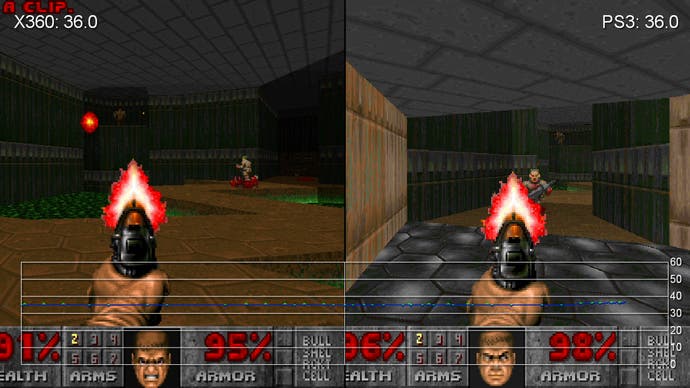
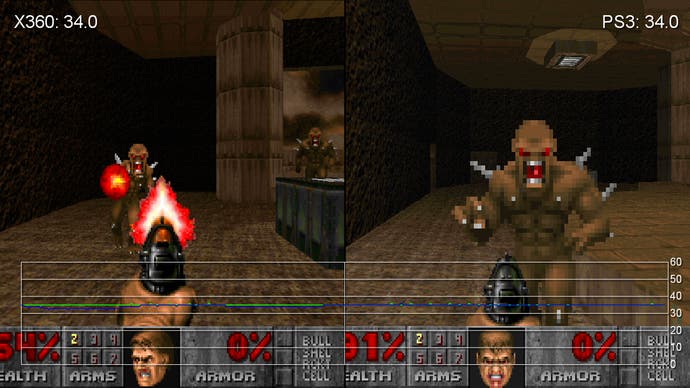
Doom 3: BFG Edition - the Digital Foundry verdict
"It's id's dogged, admirable insistence on 60 frames per second gameplay that elevates the experience and makes it so much more worthwhile - and that's where we find our point of differentiation between the two console releases."
It's a strange state of affairs where the version that is demonstrably the best of the three is also the most difficult to recommend, but that's exactly the situation we find ourselves in with Doom 3: BFG Edition. PC has additional rendering features over console, it has improved stereo 3D support and is the first title to support next-gen VR via the Oculus Rift. However, the changes don't best suit the platform, there are launch day bugs in need of patching, and the lack of mod support (which may be addressed now that Carmack has confirmed that the BFG Edition will be open sourced) is a disappointment.
Clearly, this is a product aimed at introducing Doom 3 to a new console audience, and in this respect the BFG Edition is a much more appealing proposition: the changes to the artwork and lighting make a lot more sense when viewed on an HDTV and the joypad implementation works well, producing gameplay that often echoes Rage in terms of pacing and response. Other changes to the gameplay are a mixed bag though: the lack of checkpoints is a real pain, but the controversial switch to allow the player to carry both flashlight and gun simultaneously works well - though it is a bit strange that the light doesn't produce any shadows.
However, it's id's dogged, admirable insistence on 60 frames per second gameplay that elevates the experience and makes it so much more worthwhile - and that's where we find our point of differentiation between the two console releases. While image quality is mostly identical between the two platforms, it's the Xbox 360 that more closely adheres to the target frame-rate, and thus becomes the most logical choice for those lucky enough to own both current-gen consoles.





